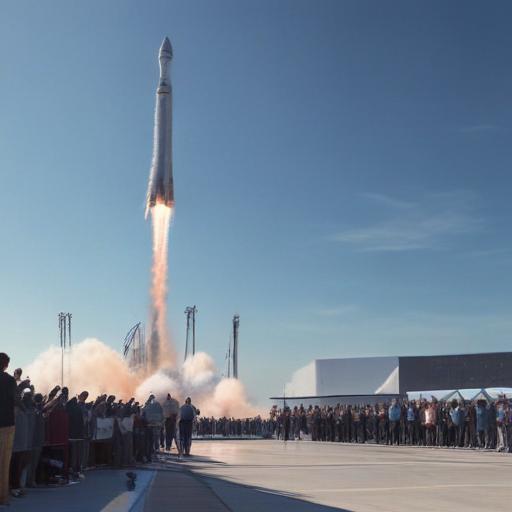SpaceX has announced the scheduled launch date for its next Starship megarocket mission as it aims for a successful Flight 9. The launch is set for no earlier than Tuesday, May 27, at 7:30 p.m. EDT from SpaceX’s Starbase test site located near Boca Chica Beach, South Texas. This marks the ninth test of the ambitious spacecraft, and it will also be the first to attempt reusing the Super Heavy booster.
The previous two launches earlier this year, Flights 7 and 8, saw the Super Heavy booster successfully return to Earth but were followed by failures with the Ship stage shortly after liftoff. The upcoming Flight 9 aims to enhance this process, with SpaceX replacing only four of its 33 Raptor engines on the booster for this launch.
Should there be delays, local officials have indicated that there are backup dates available on May 28 and May 29, supported by temporary road closures around the launch site for safety.
SpaceX’s livestream coverage will begin at 7 p.m. EDT, about 30 minutes before liftoff, accessible via the SpaceX Flight 9 mission page, their X (formerly Twitter) account, and other platforms like Space.com, which will host a simulcast. Those physically attending the launch can view it from locations like South Padre Island or Port Isabel.
The Flight 9 mission is expected to last just over one hour, and will aim to replicate objectives similar to those attempted in Flight 8, including the deployment of Starlink simulators. Unlike previous missions, the Super Heavy booster will not return to the launch site but will make a soft landing in the Gulf of Mexico.
SpaceX is committed to carefully testing this massive rocket, which, when fully assembled, stands over 400 feet tall and is designed for missions to low Earth orbit and beyond, including lunar landings and future missions to Mars.
If you’re interested in following the countdown further, detailed timelines and mission objectives are available, highlighting vital flight events, payload deployment, and landing plans.
The anticipation for SpaceX’s Flight 9 is palpable, reflecting the ongoing excitement and innovation in space exploration. The determination to achieve reusable rocket technology is a significant step toward sustainable space travel and exploration.
